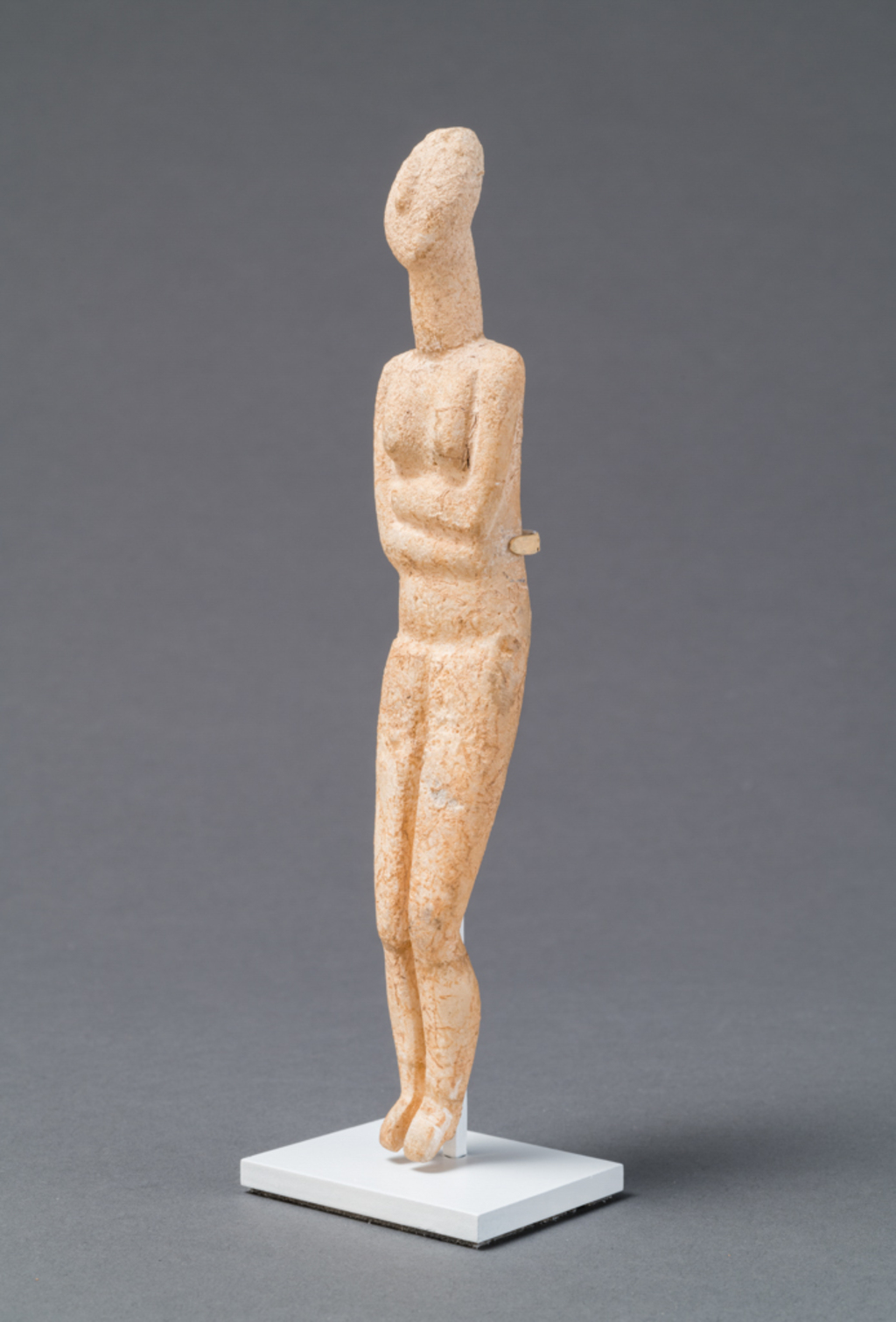Attributed to the Kontoleon Sculptor or Workshop (active between 2700–2600 BCE), this small marble sculpture represents a woman with her arms folded across her torso. The tall, narrow proportions of the figure, ovoid head, and flexed knees classify it as a Kapsala type. Kapsala figures are one of two canonical types produced in the Cyclades during the Early Bronze Age, which were later supplanted in popularity by the Spedos type. The Kapsala figures are named for a cemetery on the Cycladic island of Amorgos, where they were first identified in an archaeological context, but examples are also broadly known elsewhere in the Cyclades.
Typical for both Kapsala and Spedos figures, the nose on this sculpture is the only modeled feature on the otherwise abstract head, attached to the body by a cylindrical neck. Distinct features of the sculptor or workshop include: the long oval face with a delicate nose and prominent chin, long neck, rounded shoulders, pointed breasts above tapering arms, exaggeratedly long thighs, naturalistic modeled short calves, and small feet with arched soles. Purchased in 1960, this object does not have a known archaeological provenience, but the dealer stated it was from Paros. The majority of Cycladic figures do not have a known find spot; those that do indicate they could come from funerary, domestic, or votive contexts.

